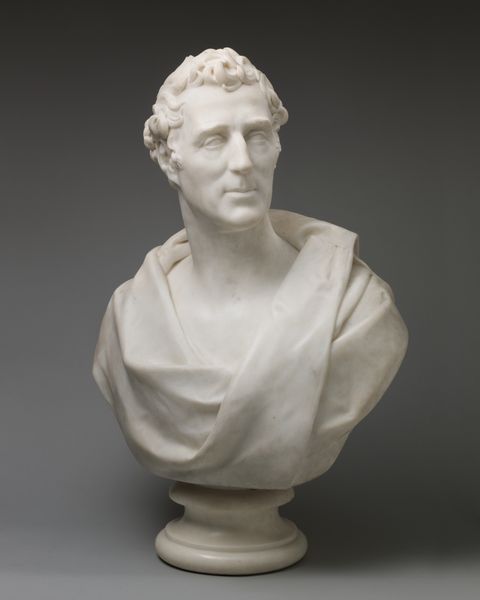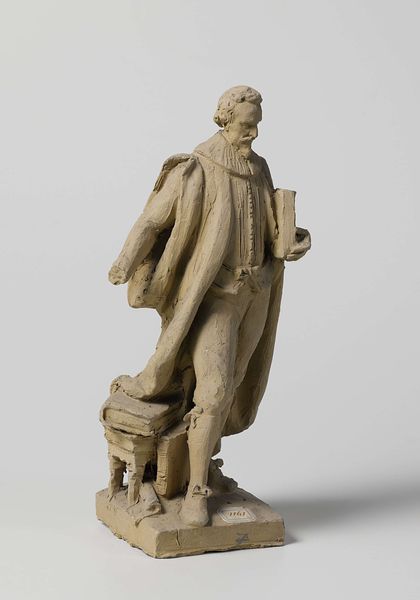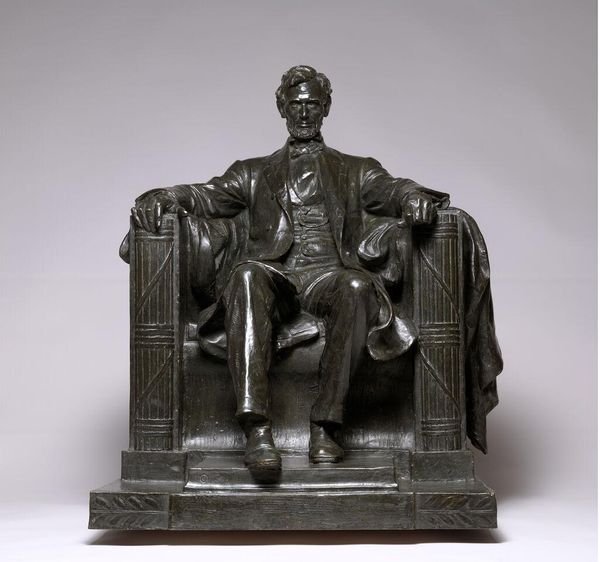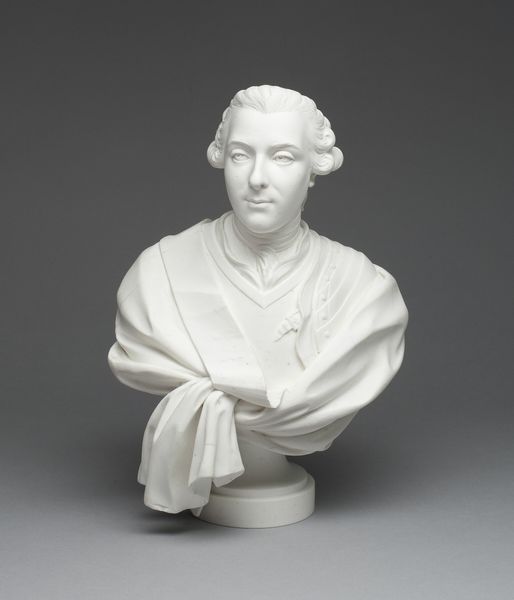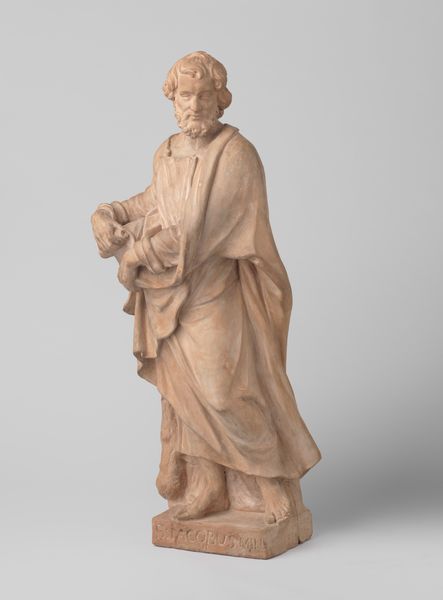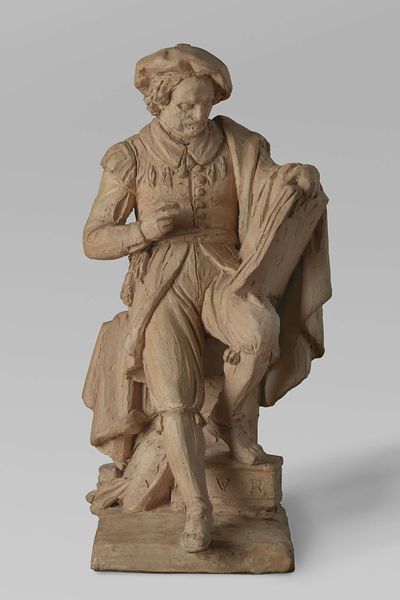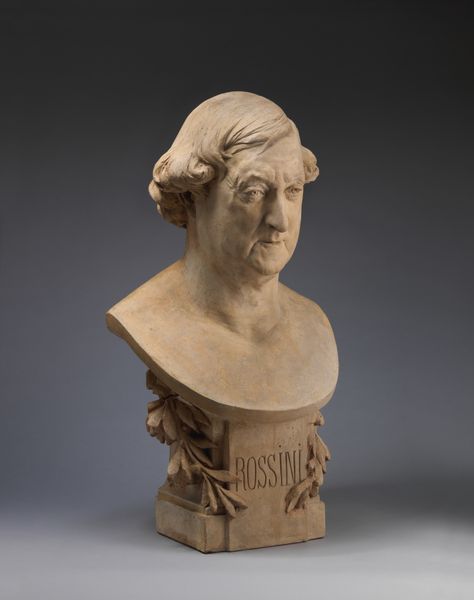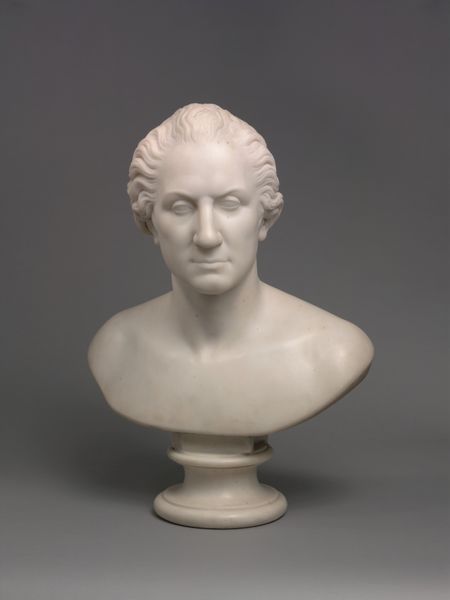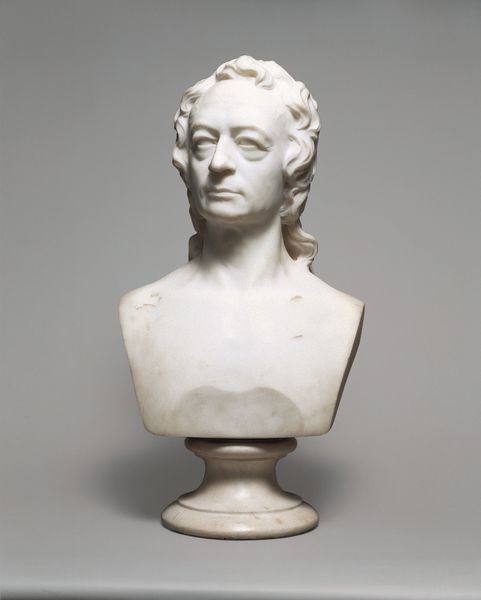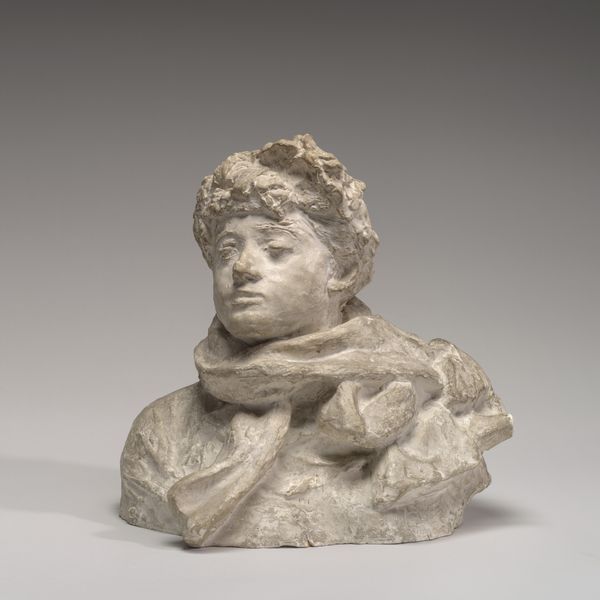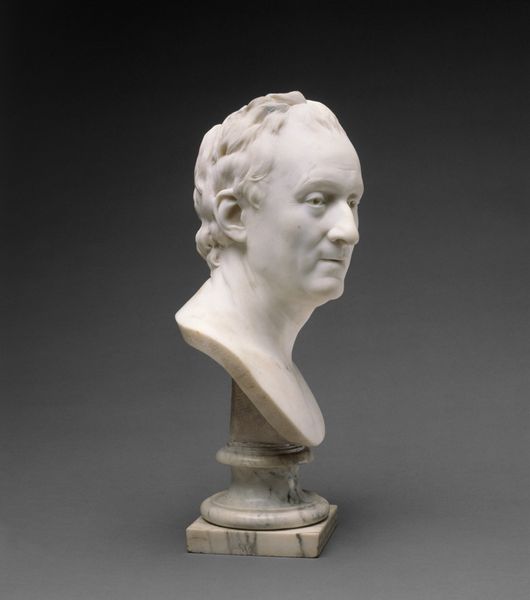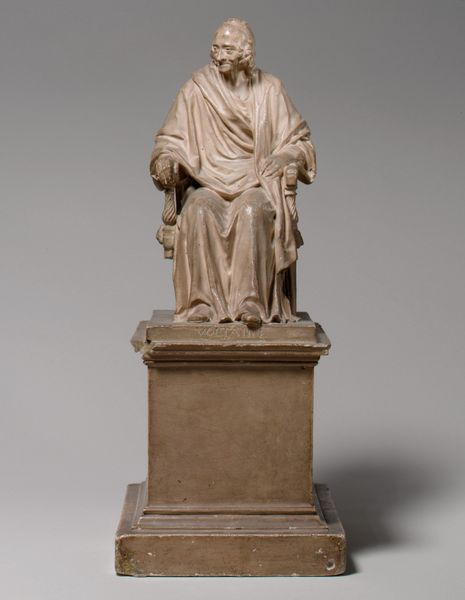
sculpture
#
portrait
#
neoclacissism
#
classical-realism
#
figuration
#
sculpture
Dimensions: 53 × 58.5× 20.6 cm (21 × 23 × 8 1/8 in.)
Copyright: Public Domain
Curator: Here we have "George Banks," a terracotta sculpture created around 1828 by Joseph Gott, now residing at the Art Institute of Chicago. What are your initial thoughts? Editor: I’m struck by the stillness and calm the sculptor captures, as if the subject has paused mid-conversation to settle deeper into his chair. There is also the interesting repetition of vertical lines contrasting with the softness of the clay medium. Curator: Indeed. Beyond its formal qualities, the sculpture presents us with questions about the sitter’s social position and the era's visual codes of power and representation. Consider how Gott, as a British sculptor working within a Neoclassical tradition, was engaging with prevalent notions of British identity in portraying an elite figure. Editor: Absolutely, it does channel a certain self-assuredness typical of classical portraiture, but translated through the textural warmth of terracotta. His gaze is direct, almost challenging, while the material offers a subtle counterpoint to the cool perfection we often see in marble busts of the period. Curator: Looking at Mr. Banks seated so casually—consider how posture can speak volumes. What does his relaxed position convey to the early 19th-century viewer versus what it conveys today? How does the sculpture align with or defy prevailing gender norms for depicting men in art at that time? Editor: It’s that very casualness, combined with Gott's handling of drapery, that pulls the viewer in. I mean, the folds of the clothing cascade across the form creating a dynamism within the relative stillness of the work, and notice the sensitive modeling of the face…the detail there almost undermines the sitter's assumed power. Curator: You are right to point out that there seems to be an element of subversion in play as well. Editor: Ultimately, it seems like Gott was less interested in purely celebrating social power and perhaps leaning into the intimacies afforded by the sculptural medium. It allows him to play with textures, and to provide warmth and an accessibility that maybe otherwise isn't there. Curator: Exactly! Gott's work reflects complex dialogues between classicism and an emerging desire for more relatable representations. Editor: A dialogue well worth further investigation indeed.
Comments
No comments
Be the first to comment and join the conversation on the ultimate creative platform.

